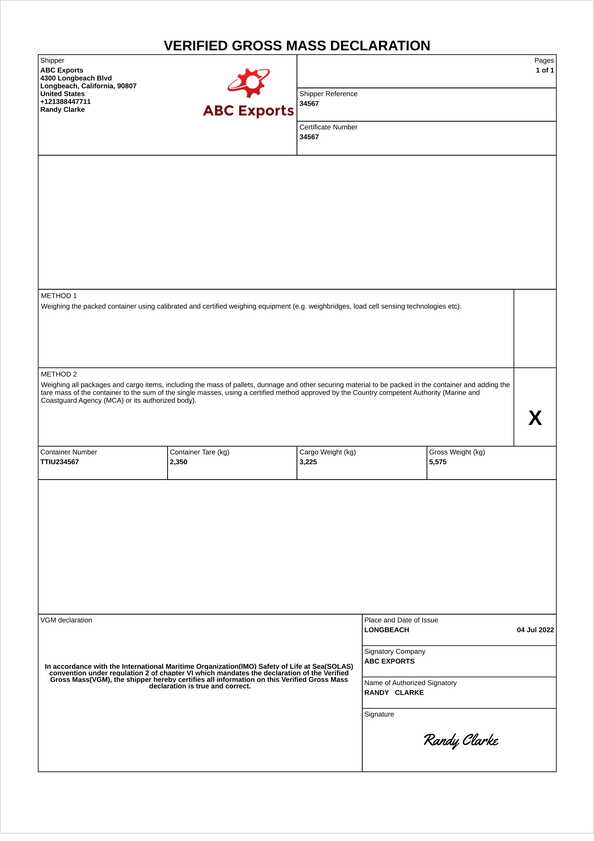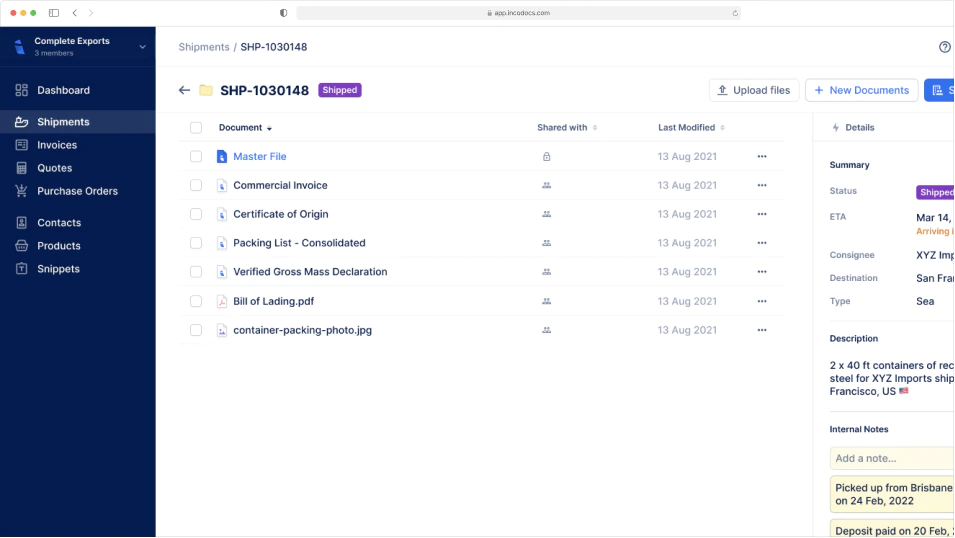IncoDocs raises $1.2M seed round led by Maersk GrowthRead the announcement

Verified Gross Mass (VGM) Declaration Template
What is a Verified Gross Mass (VGM) Declaration used for?
If a container’s mass is not verified, and a VGM is not determined, it can result in the spatial planning of the stowage process being skewed, with heavier containers taking precedence over lighter containers, resulting in possible stack collapses. To prevent any incidents like this, shippers must provide a VGM document before the containerized goods can be received at the port of export or loaded on board a ship. There are 2 approved methods that must be used to declare the Verified Gross Mass: METHOD 1 - Final weight of the packed container is taken using calibrated and certified weighing equipment Shippers can weigh the loaded shipping container and declare the Verified Gross Mass. Shippers can also request your freight forwarder to arrange weighing of your container when the truck is delivering the container to the port. The truck will be weighed at a weighbridge and the total weight will be recorded and the freight forwarder will oncharge for this service. METHOD 2 – The Shipper manually calculates the total Verified Gross Mass. The shipper must accurately record the weight of cargo, dunnage and packaging materials used to load goods inside shipping containers. The cargo weight, dunnage/packing materials and container tare weight are then added together to get the total verified gross mass of the container.
How to create a Verified Gross Mass (VGM) Declaration
Open IncoDocs
Open IncoDocs in your browser and navigate to the “Export Docs” section.
Choose the Verified Gross Mass (VGM) Declaration template
Click on 'New document set' and select the Verified Gross Mass (VGM) Declaration template along with any other export documents you wish to create.
Fill out & customize your doc
Fill out the document, customize template fields to your needs and add your company letterhead. To save time and prevent re-entry errors, enter key shipment data into the Master File to have it sync across all other documents in your set automatically.
Sign & seal
Click on the signature box at the bottom of your document to create and place a digital signature then hit “Save & Quit”. On the document preview screen, click on the ‘More’ dropdown button and select “Add company seal” to place a digital stamp.
Download or share
Download or share documents from IncoDocs in 1-click. Documents can be downloaded as PDF or CSV which can be imported into other systems without manual re-entry.
Your questions, answered.
What information is included on a Verified Gross Mass Declaration (VGM) Document?
A Verified Gross Mass Declaration document must include the below details:
Free to start,
Easy to use.
Setup in 5 mins.
